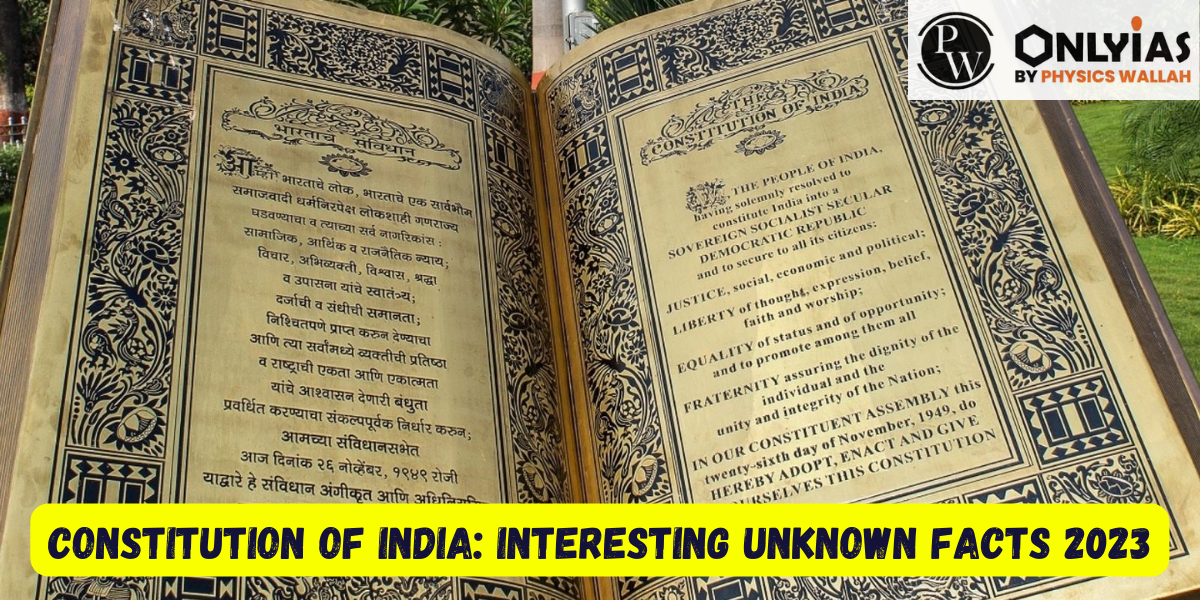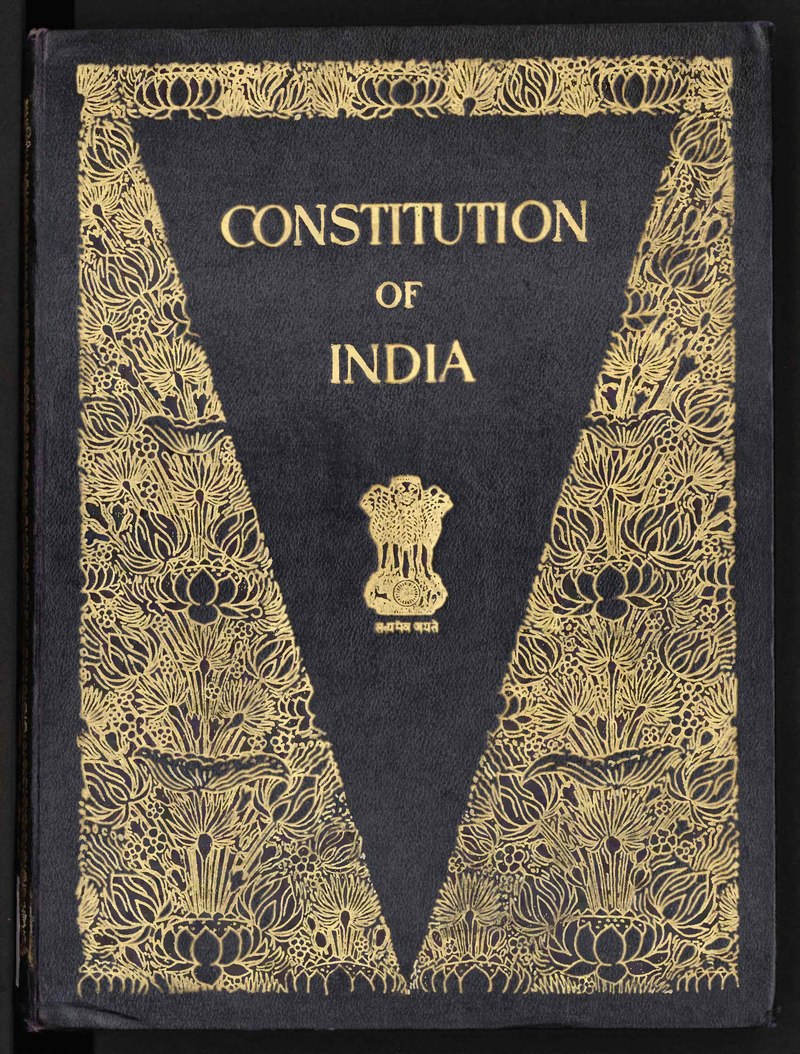
The Constitution of India, adopted on January 26, 1950, is a remarkable document that lays the foundation for the governance of the world’s largest democracy. As we delve deeper into the lesser-known aspects of this extensive constitution, we uncover fascinating and intriguing facts that highlight its uniqueness and historical significance. Here are some interesting facts about the Constitution of India in 2023:
1. Lengthy and Comprehensive Document
The Constitution of India stands as one of the most comprehensive and detailed constitutions globally. With a total of 448 articles, 12 schedules, and 5 appendices, it covers a wide range of topics, making it an all-encompassing guide for governing the nation.
2. Handwritten Original Copy
The original copy of the Constitution of India was meticulously handwritten by a talented calligrapher named Prem Behari Narain Raizada. It took him approximately six months to complete this labor of love, and each page was adorned with beautiful illustrations, adding an artistic touch to the document.
3. Inspirations from Around the World
The framers of the Constitution of India drew inspiration from various other constitutions worldwide while crafting this unique document. Elements from the constitutions of countries like the United Kingdom, the United States, Canada, and Ireland were carefully adapted to suit India’s diverse and complex needs.
4. Directive Principles of State Policy
One of the distinctive features of the Indian Constitution is the Directive Principles of State Policy. Borrowed from the Irish Constitution, these principles lay down social and economic goals for the government to pursue, aiming to promote the welfare of the people.
5. Multi-lingual Constitution
To accommodate India’s linguistic diversity and promote inclusivity, the original version of the Constitution was written in Hindi and English. Additionally, the Constitution has been officially translated into 22 languages recognized in the Eighth Schedule of the Indian Constitution.
6. Historic Commencement
January 26, 1950, holds a special place in Indian history as it marks the day when the Constitution of India came into effect, and India officially became a sovereign, democratic republic. This day is celebrated annually as Republic Day, symbolizing the birth of the nation.
7. Partial Enactment
Interestingly, while the majority of the Constitution was brought into effect on January 26, 1950, some provisions were implemented on different dates. For instance, provisions related to citizenship were enforced on November 26, 1949.
8. Evolution of the Preamble
The Preamble of the Indian Constitution has undergone amendments over time to reflect the evolving aspirations of the nation. The 42nd Amendment Act of 1976 added the words “socialist,” “secular,” and “integrity” to the Preamble, reflecting the values and principles cherished by the Indian society.
9. Guardian of Fundamental Rights
The Constitution of India is hailed as the guardian of fundamental rights. It enshrines a comprehensive list of fundamental rights that guarantee various freedoms and protections to the citizens of India, ensuring the preservation of democracy and justice.

The Constitution of India holds numerous intriguing and lesser-known facts that pique curiosity and fascination. Let’s delve into these captivating unknown aspects of our constitution:
The Constitution of India stands as a testament to the wisdom, foresight, and collective vision of its framers. These interesting and lesser-known facts about the Constitution of India highlight its complexity, uniqueness, and its role as the guiding force behind the world’s largest democracy. As we commemorate the Constitution’s role in shaping India’s past, present, and future, it remains an invaluable cornerstone of the nation’s identity and governance.
The Indian Constitution, one of the lengthiest and most comprehensive constitutions in the world, was adopted on 26th January 1950. It draws inspiration from various sources, both domestic and international. The major sources of the Indian Constitution are as follows:
The Indian Constitution represents a unique blend of ideas from various sources and continues to be the guiding document for the governance of India, ensuring its democratic and pluralistic character.

The Indian Constitution, adopted on January 26, 1950, draws inspiration from various sources, including historical Indian texts, British constitutional practices, and concepts from other countries’ constitutions. Here are some notable examples of things borrowed from other countries in the Indian Constitution:
It’s important to note that while India drew inspiration from various sources, its Constitution is a unique document that reflects the specific historical, social, and political context of the country. The framers of the Constitution of India adapted and modified these borrowed concepts to suit the needs of the Indian society and create a framework for a democratic and inclusive nation.
Article 370 of the Constitution of India: Complete Significance and Controversy
Important Articles of Indian Constitution Complete List 2023
The Indian Constitution incorporates several unitary or non-federal characteristics, including a robust central authority, a single Constitution, the appointment of state governors by the Centre, the existence of all-India services, an integrated judiciary, and more. Surprisingly, the term 'Federation' is nowhere explicitly mentioned in the Constitution.
The 3 interesting facts about India are: 1. Diverse Cultural Heritage: India is known for its rich and diverse cultural heritage, with numerous languages, traditions, and festivals. 2. Largest Democracy: India is the world's largest democracy, with over 1.3 billion people participating in massive elections. 3. Architectural Marvels: India boasts incredible architectural wonders, including the iconic Taj Mahal and UNESCO World Heritage Sites.
The remarkable accomplishment of the Indian Constitution is that it has never faced significant doubts about its legitimacy from any large social group or political party. In broad terms, the Constituent Assembly comprised representatives from diverse linguistic, social, religious, and economic backgrounds.
The Indian constitution holds the distinction of being the world's most extensive written constitution. Its preparation took approximately 2 years, 11 months, and 18 days. Interestingly, the original draft of the constitution was meticulously handwritten.
Dr. BR Ambedkar, as the head of the Drafting Committee, is credited with being the primary creator of the Indian Constitution. This constitution offers a comprehensive and flexible structure to lead and manage the nation, taking into account its distinct social, cultural, and religious diversity.
The Indian Constitution holds the record for being the lengthiest written constitution globally, containing 146,385 words in its English version. In contrast, the Monaco Constitution is the shortest written constitution, with a mere 3,814 words.

<div class="new-fform">
</div>